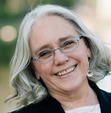Edith Maxwell's Blog, page 280
July 31, 2014
More Wicked Than Cozy–Kate Flora Talks About “Girls Night Out”
Posted by Barb, who’s on a quick turnaround from her vacation on the Jersey Shore to her vacation in Paris. Such a difficult life.
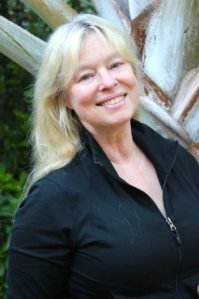 For the Wicked Cozy Authors, Kate Flora needs no introduction. As a former president of Sisters in Crime New England and Sisters in Crime, she’s been a mentor to most of us. As a writer, Kate has a resume that is both wide and deep. She’s written a strong female protagonist with her Thea Kozak series, brilliant police procedurals with her Joe Burgess books, and Edgar-nominated true crime with Finding Amy. She’s also the founder of the excellent Maine Crime Writers blog.
For the Wicked Cozy Authors, Kate Flora needs no introduction. As a former president of Sisters in Crime New England and Sisters in Crime, she’s been a mentor to most of us. As a writer, Kate has a resume that is both wide and deep. She’s written a strong female protagonist with her Thea Kozak series, brilliant police procedurals with her Joe Burgess books, and Edgar-nominated true crime with Finding Amy. She’s also the founder of the excellent Maine Crime Writers blog.
Recently, the ever-entrepreneurial Kate participated in a new venture–publishing her novelette “Girls Night Out,” with SheBooks. SheBooks describes itself as “a curated collection of short e-books written by women, for women.” It’s dedicated to advancing the cause of women in digital publishing and to paying real money to its authors, who share in the profits.
I caught up with Kate to find out what it’s all about.
Today, we’re talking about the recent release of your novelette “Girls Night Out” on SheBooks. What made you think it was the right venue for “Girls Night Out?”
 It’s one of those “happenstance” stories, really. My husband and I were having dinner with his aunt Paulette in San Francisco, and one of the other guests at dinner was Peggy Northrop, who was at time in the process of setting up Shebooks. She was talking about her vision for the e-publishing project, and how they were publishing memoirs of particular interest to women. I told her about a memoir that my late mother, A. Carman Clark, had written about women seizing control of their lives and figuring out what they wanted to do when they reached sixty, called “Fourth Quarter Dividends.” Peggy was interested.
It’s one of those “happenstance” stories, really. My husband and I were having dinner with his aunt Paulette in San Francisco, and one of the other guests at dinner was Peggy Northrop, who was at time in the process of setting up Shebooks. She was talking about her vision for the e-publishing project, and how they were publishing memoirs of particular interest to women. I told her about a memoir that my late mother, A. Carman Clark, had written about women seizing control of their lives and figuring out what they wanted to do when they reached sixty, called “Fourth Quarter Dividends.” Peggy was interested.
“Girls’ Night Out” was really an afterthought, something I mentioned in passing, and she asked to see that as well.
Why did I think Shebooks was a good venue for “Girls’ Night Out?” Well, Shebooks is a publishing venture by women for women. As a long time member, and former international president of Sisters in Crime, any venture that is about equality for women and getting them paid fairly for their writing is right up my alley. And “Girls’ Night Out” is a strong women’s story–a fascinating example of women taking matters into their own hands
“Girls Night Out” is categorized as a novelette? What is a novelette?
Seriously? I have no idea. I would have called it a novella, though it’s a bit short for that. Novelette is their term. It sounds rather like a French tart to me. And not of the pastry variety.
“Girls Night Out” raises some interesting moral questions. You’ve called it a story of revenge. In your opinion, is revenge ever justified?
In Girls’ Night Out, the justice system has failed the victim of a serial date rapist. When her friends see the damage that has been done to her, they decided the man must be punished before he does it again. The story stems from some research I did as background for Finding Amy, my true story about the investigation into the murder of a young woman named Amy St. Laurent. The killer in that book believed that he was entitled to have sex with women if that was what he wanted, and he used charm, alcohol, coercion, or drugs to have his way—whatever worked. In that case, his victims usually didn’t report it because they believed it was their own fault. Men like that leave a trail of damage in their wake, and the harm they cause doesn’t touch them.
In the course of that research, I found the work of David Lisak, Ph.D. and his interviews with college males who targeted innocent freshmen girls, got them drunk, and assaulted them. Their acts were deliberate, calculating, and ultimately indifferent to the harm they’d caused. It’s disturbing stuff, and it happens. See: https://www.youtube.com/watch?v=_iZCWfYZ9IU
Yes, it is a story of revenge, but it’s also a story of empowerment. And what happened to Jay Hanrahan, after all, he did to himself.
As for whether revenge is ever justified, I sometimes, when writing heroines who resort to uncharacteristic acts, imagine one of my children in danger or harmed. Would I resort to violence or revenge? You bet I would. Friendship is a powerful thing and a friend destroyed by a selfish act is a serous business.
You didn’t ask, but I have to add that I wrote the story to use as the basis for a screenplay. I’ve been on page 30 of that script for about three years.
What else do you have coming out soon?
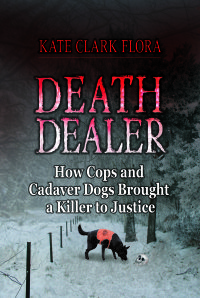 I have two new books out this fall. In September, it’s Death Dealer, the true story of a murder in a small Canadian city where the victim’s hidden body was ultimately found by game wardens from Maine and trained cadaver dogs. It’s a story I was led to by the warden who organized the search that ultimately found the victim’s body in Finding Amy. I’m fascinated by the chance to go behind the investigation and see what’s really happening in an investigation.
I have two new books out this fall. In September, it’s Death Dealer, the true story of a murder in a small Canadian city where the victim’s hidden body was ultimately found by game wardens from Maine and trained cadaver dogs. It’s a story I was led to by the warden who organized the search that ultimately found the victim’s body in Finding Amy. I’m fascinated by the chance to go behind the investigation and see what’s really happening in an investigation.
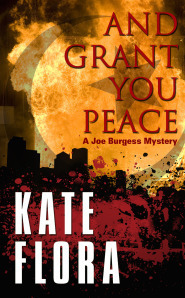 In October, it’s And Grant You Peace, the fourth book in my Joe Burgess police procedural series which takes place in Portland, Maine. It opens with Burgess rescuing a very young mother and tiny baby from a locked closet in a burning mosque. His challenge then becomes one of working his way through a maze that involves a suspicious immigrant community, an outlaw motorcycle gang, a suspicious business man, and assorted other thugs and bad guys to learn the identity of the girl, and the reasons she and her child were in that closet.
In October, it’s And Grant You Peace, the fourth book in my Joe Burgess police procedural series which takes place in Portland, Maine. It opens with Burgess rescuing a very young mother and tiny baby from a locked closet in a burning mosque. His challenge then becomes one of working his way through a maze that involves a suspicious immigrant community, an outlaw motorcycle gang, a suspicious business man, and assorted other thugs and bad guys to learn the identity of the girl, and the reasons she and her child were in that closet.
What are you working on now?
I just finished the next Thea Kozak mystery, Death Warmed Over, which, if the editor likes it, will be out in the spring. Now I’m back to rewrite. For a couple years, I’ve been working with a retired Maine game warden on his memoir, and now that I’ve given it some space, I’m revising that. Then it’s on to another novelette in the women’s book club series. And then I have a long suspense novel to revise.
Readers: You can purchase “Girls Night Out” here. What do you think of SheBooks and the concept behind it? You can read more about it here.
Kate’s Bio
Award-winning mystery and true crime writer Kate Flora is the author of 14 books, including the true crime story Death Dealer and the novel And Grant You Peace, both forthcoming in the fall of 2014. Her book Finding Amy (true crime), co-written with a Portland, Maine deputy police chief, was a 2007 Edgar Award nominee. Kate’s other titles include the Thea Kozak mysteries and the starred-review Joe Burgess police series, the third of which, Redemption, won the 2013 Maine Literary Award for Crime Fiction.
A former Maine assistant attorney general in the areas of battered children and employment discrimination, Kate is a founding member the New England Crime Bake conference, a founder of Level Best Books where she worked as an editor and publisher for seven years and has served as international president of Sisters in Crime. When she’s not riding an ATV through the Canadian woods or hiding in a tick-infested field waiting to be found by search and rescue dogs as research for her books, she can be found teaching writing at Grub Street in Boston.
Filed under: Guest posts Tagged: And Grant You Peace, Death Dealer, Finding Amy, Girls Night Out, Joe Burgess, SheBooks, Thea Kozak

July 30, 2014
Wicked Wednesday- Knowing Your Way Around Town
We’ve been talking craft all month on Wicked Wednesdays. This week we’re chiming in about how we keep track of the towns in our series. How do you road map an imaginary place? Remember which stores are on Main Street? So Wickeds, how do you keep it all straight from book to book?
Jessie: I use Scrivener. It very conveniently has a places category and I import all the places from the previous book into the next one as soon as I create a new file. Then I add any new places to the existing database as I go along.
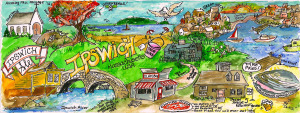
Map by Phyllis Ann Whippen
Edith: So far I have used either fictionalized real towns (Ipswich in the Lauren Rousseau mysteries, West Newbury in the Local Foods mysteries) or a real town (Amesbury, in my historical mystery) in my fiction. But when I fictionalize a real place, I add made-up streets and businesses. So far I’ve been able to keep the made-up stuff in my memory, but using Scrivener’s system for a Places folder is a great idea. In my new WIP, however, I created a fictional small town, so drawing myself a map would be a good idea. On the to-do list!
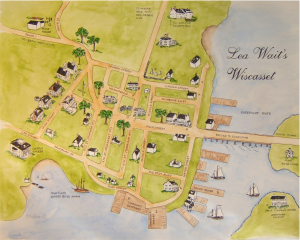
Lea Wait’s Wiscasset, Maine from her children’s books. Learn more here. http://www.leawait.com/children.html
Barb: My Busman’s Harbor turns out to be a pretty complicated place. It’s a town, and a harbor, two points of land that surround the harbor, a private island and a penninsula that leads from Route One, the main artery of the Maine coast down to Busman’s. As the books have developed, we’ve found out where more and more of the characters live and work. Like Jessie, I’ve kept Scrivener files of all the important places I’ve described– the houses, boats, town pier, marina, shops and hospital. Like Edith, I’ve modeled it on a real town–Boothbay Harbor, Maine. But I’ve made so many modifications and described so many fictional places, if I do get a contract for more books, I think it is time for a map. As an aside–I love, love fictional books with maps in them. Deborah Crombie’s are a particular favorite.

 Sherry: Tagged for Death has two main locations. They are based on fictional versions of Bedford, Massachusetts and Hanscom Air Force Base. Even though I have a good idea of how the town of Ellington, Massachusetts and Fitch Air Force Base look, I’ve made crude (very crude) drawings of each. I also keep extensive notes about what is where for both. It’s been a lot of fun to use two places I loved living in the series.
Sherry: Tagged for Death has two main locations. They are based on fictional versions of Bedford, Massachusetts and Hanscom Air Force Base. Even though I have a good idea of how the town of Ellington, Massachusetts and Fitch Air Force Base look, I’ve made crude (very crude) drawings of each. I also keep extensive notes about what is where for both. It’s been a lot of fun to use two places I loved living in the series.
Liz: All of the above! I use Scrivener too, and my town, Frog Ledge, is fictional but based on a hybrid of two towns near me. I have a good picture in my mind of how it looks, but like Barb, I think I might need a map…
Julie: My town is based on two different towns. I am keeping place notes, but already feel the need for a map, which I will do before the next book is done. Things like “how long does it take to go from the shop to the lake?” need to be consistent, and make sense. Anyone have any good map making ideas? Maybe we should create a wicked cozy map of New England?
Edith: I love the idea of a Wicked Cozy map, Julie!
Readers: Do you like maps in a work of fiction? Would you prefer to read about a real place, so you can go and trace the steps of our ficitonal protagonists, or do you prefer to read the fictional towns we and other authors make up?
Filed under: Group posts, Wicked Wednesday Tagged: amesbury, Bedford Masschusetts, Bluffing is Murder, Boothbay Harbor Maine, Busman's Harbor, Connecticut, deborah crombie, Frog Ledge, Hanscom Air Force Base, Ipswich, keeping track, lea wait, road mapping, scrivener, setting, Speaking of Murder, Tagged for Death, West Newbury

July 29, 2014
Opening Lines
Write an opening line for the photo below.
 Sherry: The former male model stared at the store his photographs used to appear in. He kept the boxers as a reminderof his six-pack abs and steely stare — his glory days that he planned to reclaim in the next fifteen seconds.
Sherry: The former male model stared at the store his photographs used to appear in. He kept the boxers as a reminderof his six-pack abs and steely stare — his glory days that he planned to reclaim in the next fifteen seconds.
Edith: The taxi dumped me off in front of a sidewalk band and sped away. But when I realized everyone’s faces were blank masks, a creepy feeling told me I’d either arrived on a different planet or in a city full of bank robbers wearing stockings over their faces.
Jessie: Marco was surprised and delighted by the turnout for his open air concert. He was so busy imaging himself on a thirty-city tour he never noticed the assembled group was really there watching the police and fire departments trying to talk a jumper down off the roof of a nearby department store.
Barb: I didn’t mind the street musicians. It was the mimes that moved me to murder.
Filed under: Opening Lines

July 28, 2014
Welcome “Headlines and High Heels” Author LynDee Walker
Liz here, and today I’m so excited to introduce our guest, LynDee Walker, Agatha-nominated author of 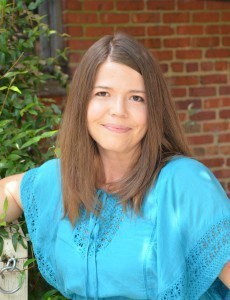 the Headlines in High Heels Mysteries featuring reporter Nichelle Clark. As a journalist at heart, I have been enjoying these books and loved putting my reporting hat back on to ask LynDee some questions.
But first, here’s the blurb for Small Town Spin, the third book in the series:
the Headlines in High Heels Mysteries featuring reporter Nichelle Clark. As a journalist at heart, I have been enjoying these books and loved putting my reporting hat back on to ask LynDee some questions.
But first, here’s the blurb for Small Town Spin, the third book in the series:
When a superstar athlete’s son turns up dead in a tiny town on the Virginia coast, crime reporter Nichelle Clarke gets the inside scoop. But she quickly spies a gaping hole her inner Lois Lane cannot ignore.
Determined to unravel the mystery, Nichelle fights off paparazzi cameras and an unexpected rival. She uncovers an illegal moonshine operation, a string of copycat suicides, and a slew of closets stacked with more skeletons than slingbacks. Chasing a killer who’s a breath from getting away with murder, Nichelle realizes too late the culprit has her number—and it might be up.
Thanks so much for having me today, Liz! One of the best things about the past year has been making new author friends, and I’m so glad you’re among them!
1. You used to be a journalist. How much of your personality shines through in Nichelle?
I think there’s a little of me in Nichelle—the hardest part of the job for me was always asking grieving people to talk to me. And I play with my hair when I’m deep in thought. But I can barely walk in stilettos, and I’m not as quick with witty comebacks as Nichelle is. I think of what I should’ve said hours later.
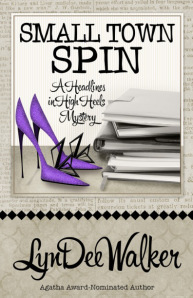 2. Nichelle has a knack for finding the most newsworthy – and dangerous – stories. What was your biggest scoop? Was it as life-threatening?
2. Nichelle has a knack for finding the most newsworthy – and dangerous – stories. What was your biggest scoop? Was it as life-threatening?
I did a few big investigative pieces, but I think the sheriff wins this prize. Many folks called him crazy, and the way he got elected ended up being a fascinating study in party politics and the dangers of voting a straight ticket. It was the white onion of investigative journalism: the more layers I peeled back, the stinkier the story got. I heard from a deputy once that the sheriff called me “a faction rising from the east to destroy us, just like in the Bible.” The pastor at the church where I taught Sunday School at the time found that hilarious.
I never ended up in mortal danger, but he did assign an unmarked car to tail me for a couple of weeks. Either the deputy was lousy at undercover, or they were trying to scare me, but I’ve never quite figured out which.
3. I love Nichelle’s designer shoe fetish and the fact that she has to troll eBay for them because a journalist’s pay doesn’t support designer shoes. Has Nichelle discovered the best brand for running in stilettos, or is the jury still out?
I would’ve never thought it possible to run in four-inch heels, but I have a friend who showed me she can. I think Nichelle would be interested in Nike venturing into the high heels market, but she tells me that among major designers, all shoes are created pretty equal.
4. Who’s your favorite character to write about (besides Nichelle)?
This is a hard question! After much deliberation (that may or may not have included a round of eeny-meeny-miney-moe) I’ll go with Grant Parker. I like his “not what you might expect” personality and his self-confidence. And he’s a nice guy, too.
5. Tell us about Joey – the Mafia man.
Joey is so much fun to write, but he’s still a bit of a mystery to me. One of the things I enjoy about writing is getting to know the characters better. Joey’s tough, and suave, and very, very smart. He has a soft spot for Nichelle (though he wishes he didn’t), and his desire to keep her safe causes him a lot of headaches.
A fun tidbit about him: in my original outline (here’s part of the reason I don’t bother with them anymore) he was only supposed to show up in one scene in Front Page Fatality, to give her a story tip and shake her up a little. But he just kept popping up in the story, and now I’m attached to him.
6. Hilarity, scoops and danger aside, you’ve tackled some tough subjects in your books. Tell us about a story from your career that stuck with you.
Always, always the lost children. One Christmas, I covered a house fire where three little ones died—the firemen who carried them out broke down during the interview. I held myself together until my story was done, but completely lost it when I got home that night.
Just a month later, I did a feature on a college student who died of meningococcal meningitis. I was the only reporter his parents sat for an interview with, and I burned some serious midnight oil getting that story right. I called his mother on the anniversary of his death every year for a long time—she was such a lovely woman, and my heart broke for her all over every time we spoke.
The last big murder trial of my reporting career was a capital case where the victim was a 16-month-old girl. Best the police and coroners could tell, she died from a blow to the head when her mom’s boyfriend hit her with a baseball bat. Because she was crying. I followed that case for a year and a half, and still remember the names of all the major players more than a decade later. The guy ended up sentenced to life in prison after two trials. I can still hear the sobs of the little girl’s father as they dragged him out of the courtroom while the jury listened to the 9-1-1 tape. Sometimes there’s no justice to be had, even when the system works the way it’s supposed to.
7. What’s next for Nichelle?
A gruesome murder, an unknown victim, and a plea from the police for help. I’m so, so excited about the next book: Devil in the Deadline will be on sale January 6. I had a blast writing it, and I’m working on edits now. I can’t wait for y’all to read it.
8. What’s on your reading list for the summer?
For the past two years, I’ve had precious little time to read between a slightly-insane writing schedule and my hubby and three little ones. So I’ve spent this summer binge-reading everything I’ve missed (including Kneading to Die and A Biscuit, A Casket, which were fabulous!). Right now, I’m in the middle of Deanna Raybourn’s Lady Julia Grey mysteries—I’m loving her characters and the Victorian tone of her books. Next in my TBR is Julia Spencer Fleming’s Through the Evil Days, which is coming with me to the beach.
Thanks for visiting Wicked Cozy Authors, LynDee! Readers, hope you enjoyed and feel free to leave a comment/question for LynDee.
LynDee Walker’s award-winning journalistic work has appeared in newspapers and magazines across the nation. After nearly a decade covering crime, courts, and local politics, she left full-time reporting for motherhood with a side of freelancing and fiction writing. LynDee’s debut novel, FRONT PAGE FATALITY, is an amazon and Barnes & Noble #1 bestseller, and an Agatha Award nominee for Best First Novel. SMALL TOWN SPIN is the third in her Headlines in High Heels mystery series. The fourth arrives January 2015.
LynDee adores her family, her readers, and enchiladas. She works out tricky plot points while walking off the enchiladas. She lives in Richmond, Virginia, where she is either playing with her children or working on her next novel—but probably not cleaning her house. You can find her online at www.lyndeewalker.com.
Filed under: Guest posts, Liz's posts Tagged: cozy mysteries, Headlines in High Heels Mysteries, Henery Press, LynDee Walker, Small Town Spin

July 25, 2014
Ask the Editor: Barb Goffman
For our next Ask the Expert slot, we invited independent editor Barb Goffman over to share 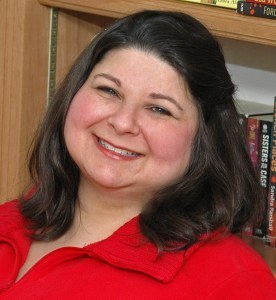 her insights and answers to our questions. Take it away, Barb!
her insights and answers to our questions. Take it away, Barb!
Area of Expertise: Crime-fiction editing
How did you get started in this business?
I discovered in high school that editing others (through my school newspaper) helped me improve my own writing. You can spot problems in other people’s writing more easily than in your own, and–at least for me–having awareness of writing issues is a key to not duplicating them. I honed my editing skills while pursuing my masters degree in journalism at Northwestern University. In the early 2000s, I moved onto fiction (writing and editing), first in critique groups, then as a co-editor of the multiple award-winning Chesapeake Crimes series. Last year I decided to put my editorial skills to work full time, and I opened my own editing business, focusing on crime fiction.
What are three things we should know about your area of expertise?
A good editor will help an author: (1) make her story sparkle through enriched characters, setting, and plot; (2) improve her writing without impinging on her style; and (3) spot plot problems, such as holes, unanswered questions, and things that don’t make sense.
Is there a general characteristic that experts in this field all share?
Good copy editors value precision. Good line and developmental editors love a good story and enjoy helping authors prune and shape their manuscripts so they stand out from the crowd.
What are the top five errors that you see?
The top five errors, in no specific order:
1) Including too much back story too early in the book. With back story, it’s best to dole it out a little at a time, with each bit being shared only when it’s necessary to enable the story to proceed.
2) Providing too little information so that the reader is left confused. If a name is mentioned, for instance, some information should accompany that name so the reader  understands who that person is. For instance, if your main character and her husband are arguing, and he storms out, saying, “I’m going to spend the night at Jane’s,” it’s important for the reader to know if Jane is his sister or his ex-girlfriend. (Unless your main character doesn’t know who Jane is, in which case she should yell something like, “Who the heck is Jane?”)
understands who that person is. For instance, if your main character and her husband are arguing, and he storms out, saying, “I’m going to spend the night at Jane’s,” it’s important for the reader to know if Jane is his sister or his ex-girlfriend. (Unless your main character doesn’t know who Jane is, in which case she should yell something like, “Who the heck is Jane?”)
3) Riding the plot train, so determined to get to the story’s end that the author forgets to stop and let her characters react to events. Real characters react to things, through dialogue and/or internal monologue. Doing so brings them to life and lets them grow.
4) Telling too much. Writing “he looked angry” doesn’t let the reader picture what’s actually happening. Is his face red? Are his fists clenched? Have his eyes popped open so wide you’d think toothpicks must be holding them open? Take the time to show important things.
5) Having events happen or characters do things that don’t ultimately make sense. Sometimes authors write things because they’re exciting, such as having a business burn down or having the main character’s house be burglarized. But when you reach the end of the story, you realize that there was no reason the bad guy would have burned down that  business. As to the burglary, even if it was designed to be a red herring, the person who committed the burglary needed a good reason to have done it. Everything must happen for a reason. Everything that happens must be believable.
business. As to the burglary, even if it was designed to be a red herring, the person who committed the burglary needed a good reason to have done it. Everything must happen for a reason. Everything that happens must be believable.
Is there a great idea you’d love to share?
If you’re copy editing or line editing your own work, you can easily get caught up in the story and miss problems on the page (typos, the use of wrong words, the overuse of certain words, unclear sentences, etc.). One way to avoid this problem is to take a chapter and throw the pages into the air. Then pick them up in random order and edit them in that order. Not only is throwing paper fun, but reading pages out of order allows you to focus on the words, not the story.
Readers: Ask Barb an editing question. Anything is fair game!
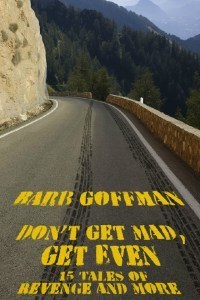 Barb Goffman likes her crime short and sweet. Well, maybe not that sweet. She’s the author of Don’t Get Mad, Get Even, a short-story collection published last year by Wildside Press. Barb won the Macavity Award last fall for best short story, and she’s been nominated multiple times for the Agatha, Anthony, and Macavity awards for her short fiction. Her next story to be published, “The Shadow Knows,” will appear in Chesapeake Crimes: Homicidal
Barb Goffman likes her crime short and sweet. Well, maybe not that sweet. She’s the author of Don’t Get Mad, Get Even, a short-story collection published last year by Wildside Press. Barb won the Macavity Award last fall for best short story, and she’s been nominated multiple times for the Agatha, Anthony, and Macavity awards for her short fiction. Her next story to be published, “The Shadow Knows,” will appear in Chesapeake Crimes: Homicidal  Holidays, due for release on October 7th. Barb’s stories run from funny to dark, and from amateur sleuth to police procedural. To support her short-story habit, Barb runs a freelance editing service, specializing in crime fiction. She also serves as secretary of the mid-Atlantic chapter of Mystery Writers of America. You can reach her at GoffmanEditing <> gmail {{{dot}}} com. Learn more at www.barbgoffman.com.
Holidays, due for release on October 7th. Barb’s stories run from funny to dark, and from amateur sleuth to police procedural. To support her short-story habit, Barb runs a freelance editing service, specializing in crime fiction. She also serves as secretary of the mid-Atlantic chapter of Mystery Writers of America. You can reach her at GoffmanEditing <> gmail {{{dot}}} com. Learn more at www.barbgoffman.com.
Filed under: Ask the Expert Tagged: Ask the Editor, Barb Goffman, Don't Get Mad Get Even, Homicidal Holidays, mystery

July 24, 2014
So Proud of My Wicked Cozys!
by Barb, on the Jersey shore in a house with ten adults and two toddlers
Today, I’m celebrating the Wicked Cozy Authors. Yes, I am one, but nonetheless, I’m stunned by the group’s accomplishments and want to celebrate them.
In early June, 2012, four of us gathered for the first time in Old Orchard Beach, Maine. Over the previous winter, Jessie, Edith, Liz and I had all signed with agent John Talbot and sold our first mystery series. We all had deadlines looming, and were excited and happy and scared out of our minds.

At that time, Jessie and I had published one book each with a small press. Mine was The Death of an Ambitious Woman, published in August, 2010. Jessie’s was Live Free or Die, also published in August, 2010. In case you didn’t know about Jessie’s first book, Live Free or Die has sold almost 100,000 ebooks and won the 2011 Mainstream Daphne DuMaurier Award for Excellence in Mystery. It’s currently being translated into German and will be available in that language in time for the holidays. So check it out, yo!
But anyway, we were four terrified, but hopeful people.
By the next retreat, in June of 2013, we’d added Sherry and Julie to our ranks and started this blog (at Sherry’s instigation). Sherry had also signed with John Talbot, and sold her Sarah Winston Garage Sales Mystery series. Julie had a proposal out with John.

Note that in the photo above we’re all in sweatshirts and a year later, same weekend, in this photo, we’re in short sleeves. This is normal in New England.
Liz and Edith’s first books in their new series, Kneading to Die and A Tine to Live, A Tine to Die, were out, as was the first book in Edith’s second series (as Tace Baker), Speaking of Murder. Jessie and I were still awaiting our series debuts and we were all writing like crazy.
This is us at this year’s retreat, in April 2014.

Picture by Meg Manion Silliker
And, as of July 15, when Jessie’s second Sugar Grove Mystery, Maple Mayhem, was released, here are our accomplishments.
Wicked Cozy Accomplishments from June, 2012 to July, 2014
9 books published
5 books submitted, awaiting publication
4 manuscripts currently being completed for deadline
2 new series sold (Sherry’s Garage Sale Mysteries and Julie’s Clock Shop Mysteries, written as Julianne Holmes)
7 proposals awaiting decisions by publishers (4 for continuing series, 3 new–WATCH THIS SPACE FOR UPDATES. Shhhh, we can’t tell. BUT WE REALLY WANNA TELL. But we can’t.)
3 Agatha nominations–for Kneading to Die, Clammed Up and “Bread Baby“
330+ blog posts.
No wonder we all look so happy!
Filed under: Barb's posts Tagged: Clock Shop Mystery Series, John Talbot, Live Free or Die, local foods mysteries, Maine Clambake Mystery, Pawsitively Organic Pet Food Mysteries, Sarah Winston Garage Sale Series, Sugar Grove Mysteries, The Death of an Ambitious Woman, Wicked Cozy Authors

July 23, 2014
Wicked Wednesday – Who’s Off Limits for Murder?
It’s Wicked Wednesday again, where we all weigh in on a topic. Continuing our theme this  month on characters, we’re talking about who we just couldn’t kill off in our series without serious consequence (or who we’d just miss too much!).
month on characters, we’re talking about who we just couldn’t kill off in our series without serious consequence (or who we’d just miss too much!).
Liz: I could never, ever kill off an animal in my books. Doesn’t matter if it’s a “main character,” like Scruffy or Nutty, or a walk-on four-legged friend. I have never been able to read books where animals are killed (I’ve been known to simply stop in the middle) and I would not cross that line. For people? Jake and Char. I’ve gotten attached to them.
Edith: I have broken a rule three times (so far) and written characters who are based on  someone I love in real life. So they’re never going to be candidates for murder. Neither are children (following the animal rule), which includes fourteen-year-old Ellie and seventeen-year-old Vince, or Cam’s great uncle Albert. But I suppose a supporting character like Felicity, or Elise (from Speaking of Murder), could need to die to move the story along. I sure don’t have that planned, though, and Elise already nearly died once, in Speaking of Murder. Shouldn’t that be enough?
someone I love in real life. So they’re never going to be candidates for murder. Neither are children (following the animal rule), which includes fourteen-year-old Ellie and seventeen-year-old Vince, or Cam’s great uncle Albert. But I suppose a supporting character like Felicity, or Elise (from Speaking of Murder), could need to die to move the story along. I sure don’t have that planned, though, and Elise already nearly died once, in Speaking of Murder. Shouldn’t that be enough?
Jessie: At this point I can’t say for certain there are any characters I wouldn’t ever write as a victim. I know I don’t choose to read books with children as victims and I’m not sure I could write one. I’m a little superstitious about it, actually. Oddly, every time I’ve written a book, soon after I end up meeting a person in real life who is very much like one of the characters. I’d be so terribly upset to meet a child who ends up as a victim.
Barb: I don’t like to think about anything being off limits. That being said, Julia’s my point of view character in the Maine Clambake Mysteries, which are written in first person, so if she was gone it would shake things up a LOT. I do have one child character, Julia’s beloved niece, and if she was killed it would take the books way out of the realm of the cozy. But I have thought about killing off every other secondary character, particularly if they’re being illusive or misbehaving. However, so far I’ve focused on killing off random strangers.
Readers, what characters do you think are off limits for murder?
Filed under: Group posts Tagged: Cam Flaherty, craft of writing, Speaking of Murder, Tace Baker

July 22, 2014
Secrets with Martha Cooley
Sherry: We are so happy to welcome Martha Cooley today. Happy Book Birthday, Martha. I was lucky enough to get a copy of Ice Shear at Left Coast Crime. It’s a wonderful book.
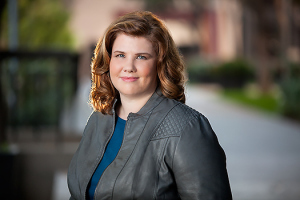 Martha: Thanks to Sherry Harris and the rest of the Wicked Cozy crew for inviting me to do a guest blog!
Martha: Thanks to Sherry Harris and the rest of the Wicked Cozy crew for inviting me to do a guest blog!
If I had my way, my books would consist of nothing but backstory. There’s nothing I enjoy more than writing long explanations about whether characters preferred to ride the yellow duck or the white rabbit at the playground, why they have an aversion to peanut butter, what those five years of college were like and why they had six different majors, and that time they watched five seasons of The Wire in slightly under two weeks. Needless to say, this sort of description would result in a plot that would bore readers to tears. But there is another reason I keep some of this information to myself: I like for my characters to have secrets.
These secrets can be big or small. In Ice Shear there is a murderer with a destructive secret: “That woman was a monster who deserved to die.” Officer June Lyons chases that person until the very end. Along the way June uncovers secrets being held close by others. One is in love with the wrong person. A second can’t escape their past. A third hates being poor, especially when they see the murder victim throwing opportunity away.
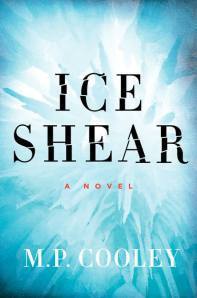 It’s not just the murder suspects who have secrets. The secrets I keep from my readers don’t need to be life changing, and they don’t need to be bad. In fact, these small details are often the thing that fixes a character in my mind in a way that knowing their entire backstory doesn’t. For example, I’ll let you in on something: June’s father thinks of himself as an excellent dancer. This is something that this grumpy divorced ex-police chief would go to his grave before telling anyone, but I know (and now you do, too!). He tamps down that side of himself because it doesn’t fit his tough guy image, but inside he’s a bit of a romantic.
It’s not just the murder suspects who have secrets. The secrets I keep from my readers don’t need to be life changing, and they don’t need to be bad. In fact, these small details are often the thing that fixes a character in my mind in a way that knowing their entire backstory doesn’t. For example, I’ll let you in on something: June’s father thinks of himself as an excellent dancer. This is something that this grumpy divorced ex-police chief would go to his grave before telling anyone, but I know (and now you do, too!). He tamps down that side of himself because it doesn’t fit his tough guy image, but inside he’s a bit of a romantic.
Other not-so-exciting secrets include a person who has eaten cucumber and cream cheese sandwiches for lunch every day for the last three years; a church-going pillar of the community who ran cockfights with his outlaw brothers when he was young (and who is now a vegetarian); and a millionaire who irons his own shirts because the cleaners don’t get the creases right. These details don’t give me every facet of their personality, but are a brief snapshot of who they are and what they value.
These secrets can also help with developing characters in the series. The mother of one of my series characters was a destructive alcoholic. Her behavior made him who he is—a peacemaker and a people pleaser who has the smallest streak of his mother’s rebellion. Who he is is revealed in book one. How he got that way is revealed in book two. My hope is that when people in book two find out the secrets he carries, that it will feel like something they knew all along.
The last type of secrets I have in my book are those I keep from my characters. Like people, my characters try to hide their weaknesses, appear as they think they should, or live of life of lowered expectations because they’ve given up hope for more. They keep up these appearances to the point where they begin to believe it themselves. June Lyons is one of those people. She thinks that she has left behind heroics, presenting safety lectures at schools and handing out parking tickets all there is to life. But when a crisis comes, the real truth comes out. Others may crumple, their bluster fallen away, but for June her innate heroism and strength surprise everyone, including herself. Me? I knew it all along.
Readers: What secret have you discovered in a book that surprised you? Have you ever read one, or written one, that you thought should have stayed secret? And what questions do you have for M. P. Cooley? Ask away.
M. P. Cooley’s debut crime novel ICE SHEAR (William Morrow) is one of O, The Oprah Magazine’s Best Books of Summer 2014 and was called “an excellent debut” by Publishers Weekly in their starred review. A native of upstate New York, she currently lives in Campbell, California. She studied literature at Barnard College, and went on to work in tax and law publishing, acquiring business, accounting, and economics books. Currently, she works in administration at a nonprofit organization in Silicon Valley.
Filed under: Guest posts Tagged: Ice Shear, M. P. Cooley, Martha Cooley

July 21, 2014
Nothing New Under the Sun
Jessie: Thinking about the past while at the seaside in Maine
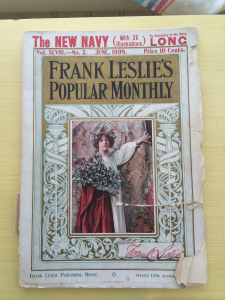 Last weekend I had the pleasure of attending Books in Boothbay with many talented and charming writers including our very own Barb Ross. Because the event was being held an hour and a half from my house and the route was taking us north along the Maine coast on a Saturday we left early. Extra early. So early in fact, that we had time to stop at an antiques shop for a look around. There were many lovely things to peruse including two beautiful old typewriters I had trouble leaving in the shop. The one thing I couldn’t leave without was a copy of a magazine, Frank Leslie’s Popular Monthly, June 1899.
Last weekend I had the pleasure of attending Books in Boothbay with many talented and charming writers including our very own Barb Ross. Because the event was being held an hour and a half from my house and the route was taking us north along the Maine coast on a Saturday we left early. Extra early. So early in fact, that we had time to stop at an antiques shop for a look around. There were many lovely things to peruse including two beautiful old typewriters I had trouble leaving in the shop. The one thing I couldn’t leave without was a copy of a magazine, Frank Leslie’s Popular Monthly, June 1899.
The magazine featured articles on the Navy, women as travelers and the story of vanilla, as well as a serialized novel and a number of poems. But what really captured my attention were the advertisements.
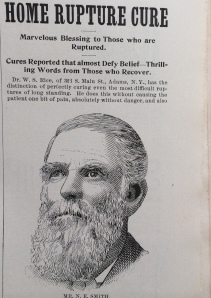 Some ads were disturbing like one hawking a Home Rupture Cure which calls itself “A Marvelous Blessing for Those who are Ruptured”. The ad never stated exactly what was ruptured. My husband thought it referred to eardrums. I voted for back troubles because I don’t want to think about a home hernia cure.
Some ads were disturbing like one hawking a Home Rupture Cure which calls itself “A Marvelous Blessing for Those who are Ruptured”. The ad never stated exactly what was ruptured. My husband thought it referred to eardrums. I voted for back troubles because I don’t want to think about a home hernia cure.
Bicycles were big business in 1899, as were cameras and watches. You could purchase a printing press for just $5.00 or a newspaper press for $18.00. I spotted a handsome roll top desk I would love to own, complete with pigeon holes and free shipping for $19.85.
Travel ads filled several pages. I found myself wondering what it would have been like to take a fourteen day cruise from NYC to Nova Scotia and Newfoundland for only $60.00. Or to enjoy “Summer’s Paradise in Lake Erie” which claims to be “Just Far Enough North”.
There were ads for cancer cures, insomnia aids and work-at-home schemes. Weight loss medications, exercise equipment guaranteed to turn weaklings into Olympians and baldness solutions filled the back quarter of the magazine. Foot powders, dandruff solutions and aids to digestion were all enthusiastically endorsed by earnest sounding doctors and housewives who assured readers they too were skeptical until they tried the products for themselves.
As I leafed through the magazine I was struck at which things change and which do not. The people in the photographs and drawings sport hairstyles and clothing that would be out of place today but their worries, concerns and cravings wouldn’t be. We still want to save time in the kitchen with convenience foods and we worry about teething pain in babies. People still search for more effective headache treatments and soaps with superior cleaning power.
All those ads made me feel like maybe the world isn’t changing as quickly as it sometimes seems to be. Maybe a hundred years from now someone will happen upon a magazine and chuckle at our interest in organic foods, time saving devices and beauty products. And maybe they’ll be struck at how they are still fighting the battle of the bulge, worrying about their children and falling for get-rich-quick schemes. I just hope no one is still suffering from ruptures of any kind!
Readers, which types of products and pastimes do you think will still be around in a hundred years? Which ones do you hope won’t be?
Filed under: Uncategorized

July 18, 2014
Pivot
 On Wednesday this week I learned how to use pivot tables in Excel. My life has been changed, for the better. What, you ask, are pivot tables? Suppose you have a large spreadsheet of data. But you only want to see a small part of it–for the month of June, how many apples did I sell out of the back of my car? Provided you are tracking all of that, you can get a smaller table of information sucked out of the massive data table. You can also “pivot” the rows and the columns to let the data be seen differently.
On Wednesday this week I learned how to use pivot tables in Excel. My life has been changed, for the better. What, you ask, are pivot tables? Suppose you have a large spreadsheet of data. But you only want to see a small part of it–for the month of June, how many apples did I sell out of the back of my car? Provided you are tracking all of that, you can get a smaller table of information sucked out of the massive data table. You can also “pivot” the rows and the columns to let the data be seen differently.
Some of you are intrigued. Others are worried there is a Wicked Cozy breakdown going on–what does this have to do with writing cozies?
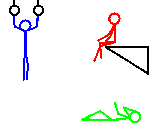 Let me explain. First, some context. I am in the middle of editing my manuscript. First draft is done. Read through is done. Now the editing is underway. In some places, I need to layer in details. In others, I need to make sure there is consistency throughout. But there are other scenes where the lessons of the pivot table come in very handy.
Let me explain. First, some context. I am in the middle of editing my manuscript. First draft is done. Read through is done. Now the editing is underway. In some places, I need to layer in details. In others, I need to make sure there is consistency throughout. But there are other scenes where the lessons of the pivot table come in very handy.
First, with pivot tables, you need to think about the overall sort of the data. In writing, you need to think about what you need to pull out of the data/scene. What is the point of the scene? Is everything serving that?
Second, in pivot tables you can keep narrowing or widening the data until you learn exactly what you want to learn. In writing, you need to keep working until you get it right. Can you add elements, or take some out? When is the scene doing exactly what you need it to do?
Third, in pivot tables you can literally say “make the rows columns and the columns rows: and make it so. In writing, does a pivot help? Should you change point of view? Add a character? Layer in a red herring? Change the dialogue, or the subtext?
And lastly, details matter. With a pivot table, you can change formatting, add totals or subtotals, add colors, and more. In a scene, can the reader smell, see, taste, hear, feel elements in the scene? Is the dialogue polished? Are all the boring bits gone?
I love learning new things, and suspect that pivot tables are going to change the way I work with data. But as importantly? They are going to help me edit my manuscript. Looking forward to updating you on that soon.
**Note: Do you live near Newburyport, MA? Tonight I am going to be moderating a panel with three of the Wicked Cozy Authors, Liz Mugavero, Edith Maxwell, and Jessie Crockett! Hope to see some of you there!**
Filed under: Uncategorized


